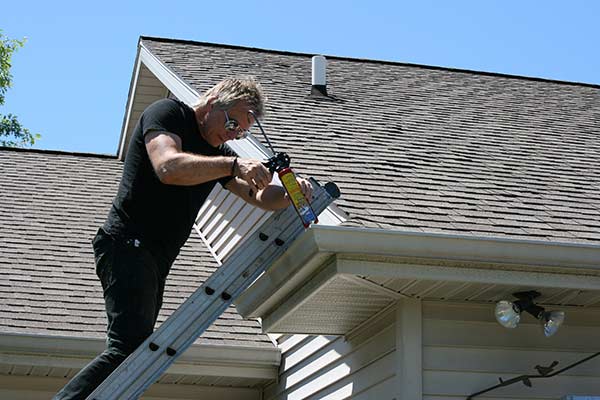Keeping your gutters clean can clear out rainwater efficiently. But what if you encounter a major issue with your gutter? With no help around, you need to pick up the tools and fix the issue yourself. The dilemma that you might have is whether it’s safe to do the Gutter repair without taking professional help. Well, if you follow the tips below, you will certainly come through and become experienced in this matter.

-
Table of Contents
Unclogging the gutter
Start by unclogging the gutter first. Remember, you will get your hands dirty. Therefore, it is best if you use gloves. Climb a ladder and inspect the gutter thoroughly. Do you see any object that is clogging the gutter? Sometimes leaves and twigs accumulate to block the smooth passage in gutters. Remove the debris with your hand first. If it doesn’t come out easily, you can use your garden hose to clean the remains. But make sure you maintain your balance on the ladder. Do this every month, especially during the monsoons to keep your gutter clean. Visit for getting the best gutter guards for your home.
-
Realigning the gutter
Water is supposed to drain towards your downspouts. If you notice that the gutter is clean and clog-free but the water isn’t flowing towards the downspouts, then it means the gutter isn’t aligned properly. Realigning is an easy and straightforward process, involving the following steps:
- Drive long nails into the gutter’s rear side of the fascia board. Keep the same distance between each nail.
- Remove the support brackets from the gutter gently.
- Tie a string from one end of the fascia board to another. The drop or fall should be at least half inch for every ten feet.
- Reinstall the brackets according to the tilt of the string.
-
Removing rust
Rust leads to clogging of the gutter and eventually your gutter will fall off. Don’t let that happen. If you notice rust, remove it as soon as possible. Wear goggles before you do. Take a sandpaper and start scrubbing the areas that has rust on it. If the rust is on a large part of the gutter, you can use a wire brush instead. Once you finish, apply a rust-resisting primer on those areas. It would be best if you apply the primer on the entire gutter. If you find slight cracks, apply a coat of sealant first. Finish off by applying two coats of gloss paint or bitumen.
-
Fixing PVC leaks
Plastic gutters may leak over time. They cannot withstand extreme weather conditions for years. The gaskets and rubber seals eventually give way, leaving significant gaps between two joining sections. You should start by separating the gutter section and removing the debris and dirt around the seal. Replace the seal and attach it as firmly as possible. Refit the rubber seals and gaskets to make your gutter work like new again.
-
Fixing a broken downspout
A loose downspout is often a common issue with gutters. It doesn’t mean you need to replace the downspout completely. Check whether the connecting bracket is in place or not. If it isn’t, you need to tighten the correcting bracket. Place the bracket slightly lower or higher than its original position and nail it with new pilot holes. Bring nails or screws and reaffix them on the bracket. 6.5mm or ¼” galvanized screws are enough to do the job. Double-check whether the bracket and the downspout are still wobbling or not. If they aren’t, you are successful in fixing the loose downspout.
Repairing your gutter isn’t an impossible task. With the right tools and the DIY tips mentioned above, you can fix some of the basic problems that gutters mostly encounter.

 Top Steps to Take When Buying a New Home
Top Steps to Take When Buying a New Home How To Give Your Residential Property A Facelift In Yarmouth MA
How To Give Your Residential Property A Facelift In Yarmouth MA 6 Tips for Choosing the Best Water Damage Restoration Companies
6 Tips for Choosing the Best Water Damage Restoration Companies Dream House Plans & Designs
Dream House Plans & Designs